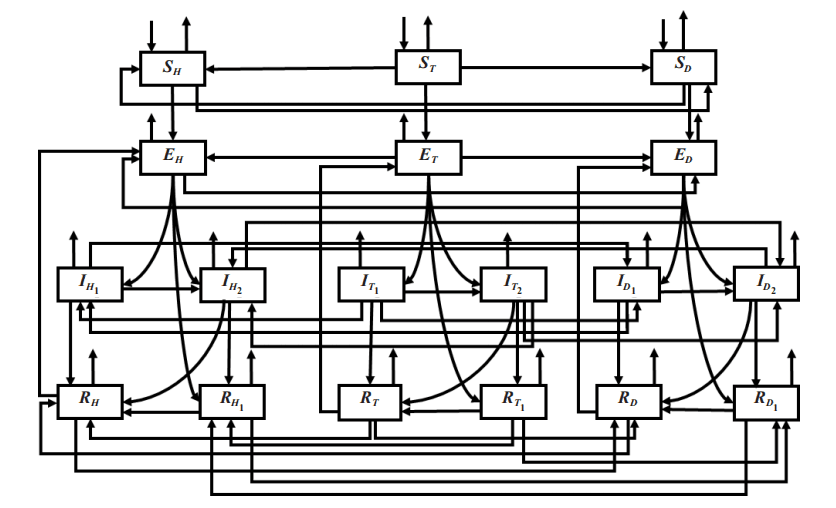A Mathematical Model for the Study of Effectiveness in Therapy in Tuberculosis Taking into Account Associated Diseases
DOI:
https://doi.org/10.37256/cm.212021694Keywords:
diabetes, HIV/AIDS, ordinary differential equations, TBAbstract
Tuberculosis (TB) remains a major global health problem. We present a deterministic mathematical model for the study of the effectiveness of therapy in TB to determine the impact of HIV/AIDS and diabetes in the spread of the disease and drug resistance. Our model takes into account the relationships between TB, HIV/AIDS, and diabetes and we also study the behavior of multidrug-resistance (MDR-TB) and extensively drug-resistant (XDR-TB). The main mathematical and epidemiology features of the model are investigated. The basic reproduction number (R0) in the different sub-populations (diabetics, HIV/AIDS, and those who do not suffer from these diseases) were studied. Conditions were obtained on the model parameters to know when the growth of the parameters associated with resistance to TB treatment has a negative impact on the transmission of TB in the population based on the R0 study. It is concluded that MDR-TB and XDR-TB have a negative impact on TB control. Computational simulations show that a greater number of drug-sensitive TB cases with respect to MDR-TB and XDR-TB cases are reported in the infected compartments, and MDR-TB cases surpass XDR-TB cases, except in the diabetes sub-population, which has a growth of XDR-TB cases that surpasses the other compartments of infected of all the sub-populations. It was shown when comparing the sub-populations of diabetes and HIV/AIDS, that although the diabetes sub-population reports a higher number of XDR-TB cases, a lower number of drug-sensitive TB and MDR-TB cases, have a greater number of recovered cases with respect to HIV/AIDS sub-population at the end of the study period. Also, when the XDR-TB cases in the diabetes sub-population exceed the other infected compartments, there is a growth of recovered TB in this subpopulation. The results suggest that it is necessary to increase the attention to the diabetic population, which includes improved glucose control, increase the number of specialized medical consultations to achieve permanence in TB treatment and control the entry of individuals to the diabetic compartments by tests of diabetes.


